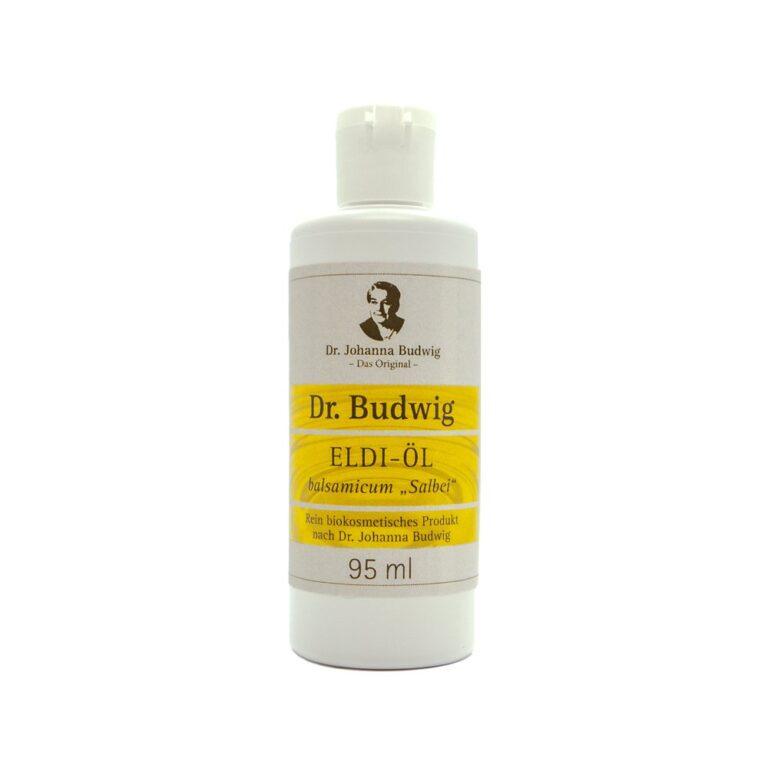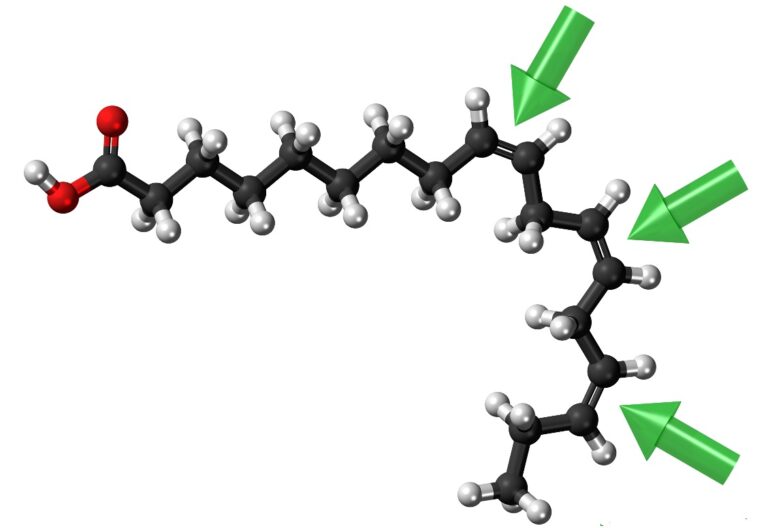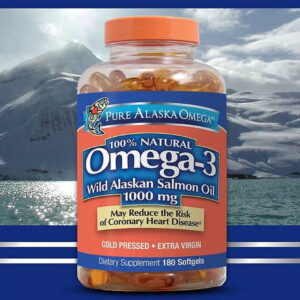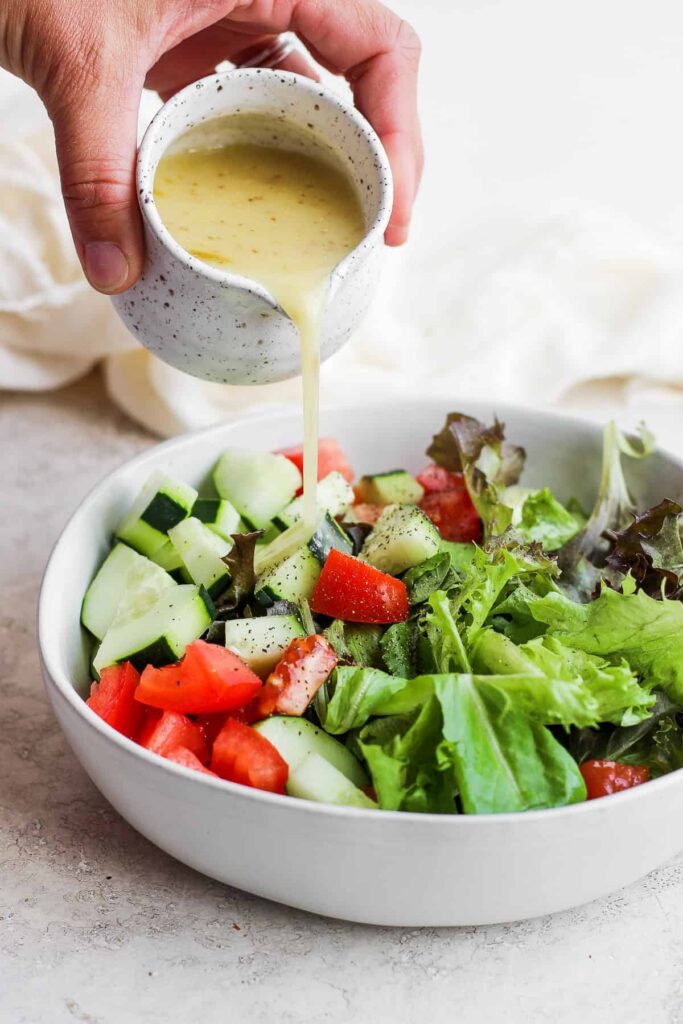
Flaxseed - O3-rich oil, lignans and fiber
- A "No-brainer" for your health!
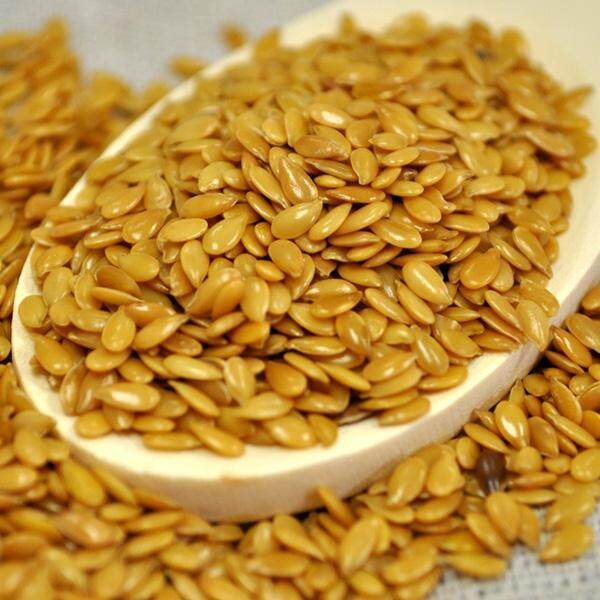
“Wherever flaxseed becomes a regular food item among the people, there will be better health”
– Mahatma Gandhi
Flax OIL (“Liquid Sunshine”) helps reverse all major degenerative conditions caused by omega-3 deficiency: including cardiovascular disease (anti-atherogenic, regulates blood pressure), cancer, skin disorders, neurological problems (depression, anxiety), diabetes, multiple sclerosis, arthritis,

FlaxSEED benefits include:
- Deals with digestive issues – mucilage works against constipation, gastritis, ileitis, colitis, diverticulitis;
- Regulates hormones – improves PMS, osteoporosis; hormone-related cancer,
- Anti-viral / anti-fungal / anti-bacterial.
History of flaxseed (Linum usitatissimum)
The latest superfood fad has been going in and out of our blenders for decades (usually focused on profits), but flaxseed has been used almost since civilization began. Archaeology references flaxseed (linseed) cultivation dating back to the early Neolithic period when man first began to grow crops. At first it was grown for textilesIts healing properties are mentioned in ~650 BC Greek and Roman writings. Ancient East Indian cultures felt that flax consumption was necessary to reach “nirvana”- a state of joy and contentment. During the 8th century, the emperor Charlemagne so revered the health benefits of flaxseed that he passed laws and regulations requiring its cultivation and consumption.

Recommended DAILY dose of flax SEED and flax OIL
For health maintenance
3 Tbsp. fresh, coarsely ground FLAX SEED (ground from 2 1/2 Tbsp. WHOLE flax seed).
Contains 1 Tbsp. of freshest possible oil providing health-boosting omega-3 ALA, lignans and both soluble (mucilage) and insoluble fiber. Higher doses of the SEED are generally not recommended because of its high lignan (phytoestrogen) content.
PLUS
1 Tbsp. organic, low heat-pressed (<122ºF), quality FLAX OIL. For additional omega-3 ALA.
Delicious recipes (E.g. Fruit Smoothie, Oats ‘n’ Flax Porridge, Creamy Nuts ‘n’ Berries) are suggested for this minimal daily intake of flaxseed and oil.
PLUS
Necessary nutrients for conversion enzymes: Omega-3 ALA needs to be converted to EPA and DHA by enzymes, which require vitamins B3, B6, C and minerals: zinc and magnesium.
Additionally - For therapeutic purposes i.e. when omega-3 deficient
Consume up to 6 additional Tbsps. flax OIL / day.
If you have not hitherto ensured a sufficient intake of omega-3, you will need to add to the maintenance dose to build your body’s omega-3 ALA storage amount. Fats expert Udo Erasmus, phD, recommends 5-6 Tbsp. / day until stores are replenished.
How many tbsps. depends on seriousness of health problem. The OIL is necessarily blended with sulfurated protein (e.g. cottage cheese, yogurt or whey protein) to aid delivery to the body’s cells, as in the Dr. Budwig’s oIl / protein diet.
Recipes for dressings, vegetable spreads and more are used to consume higher amounts of oil.
After fixing the omega-3 ALA deficiency, you should continue with just the maintenance dose, since flax oil in high doses will OVER-supply the body’s omega-3 ALA requirement.
"Mega Health beneficial" properties of flaxseeds
This nutritious, gluten-free, high protein food is the richest food source of both incredibly health-beneficial omega-3 α-linolenic acid and phytoestrogens (lignans), and almost 30% fiber!
Flaxseed: Highest food source of Omega-3 α-linolenic acid (ALA)
- The health benefits of both its O3 and O6 content are simply mind-blowing! Every system in the body needs these essential fats (EFAs) to function properly, and O3 in particular is sadly lacking in a typical Western diet. If you are trying to fix a problem with your health – obtaining sufficient O3 is the place to start, and flax oil from FRESH ground or low heat-pressed (<122ºF) flax seed is an excellent source.
- The high omega-3 ALA content of the OIL in flax seeds provides a remedy for today’s very prevalent, health-detrimental omega-3 deficiency. Flaxseed is ~35-45% oil (by weight), which averages ~55% ALA. The conversion from ALA to the desired active omega-3 forms EPA and DHA is only ~10-15%, since it requires enzymes, which are in limited supply and the conversion is negatively affected by several factors, including age, lack of nutrients, certain illnesses, and more. So — 2 1/2 Tbsp. flax SEEDS contains ~1 Tbsp. flax seed OIL, whose ALA content is converted to about 700 mg of EPA / DHA – i.e. equivalent to about two typical 1-gram fish oil capsules.
- This minimally processed, FRESH O3 source resonates in the cell membrane “in tune” with the frequencies of sunlight. Resonation increases cellular energy production by attracting electrons.
Flaxseed: Highest food source of plant lignans (phytoestrogens)
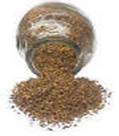
(Note: lignans are different to lignins, which are a type of insoluble fiber)
Lignans belong to a group called polyphenols having much sought-after health-beneficial properties. Antioxidant, anti-inflammatory, antimicrobial to name a few. In addition to lignans in flaxseed (and grains), other polyphenols you may recognize include quercetin (in apples), catechins (in dark chocolate and cherries), resveratrol (in pistachios, wine, and blueberries), and curcumin (in turmeric).
Phytoestrogens (plant estrogens) have a structure similar to the steroidal estrogen hormones.
Estrogen is a hormone in the body, which exerts its effect by binding to estrogen receptors on cells of numerous body tissues, including those associated with reproduction, or those in bone, lungs, liver, heart and brain. Phytoestrogens have a weaker effect than endogenous estrogen, and so may block or antagonize estrogen, but they still do have an estrogenic effect, which may be tissue specific. For example, an anti-estrogenic effect could reduce risk of reproductive organ cancers, whilst a weak estrogenic effect could increase bone density and reduce osteoporosis. A topic of current research.
Additionally, independent of effects on estrogen receptors, phytoestrogens may change estrogen activity by altering the activity of enzymes involved in estrogen metabolism Pubmed
Phytoestrogens include:
- Plant lignans: Secoisolariciresinol diglucoside (SDG), in flax and sesame seeds, grains, vegetables;
- Isoflavones: genistein and daidzein, in soy, mung beans, alfalfa;
- Coumestans: in sprouts of alfalfa, clover, mung and soy beans.
Secoisolariciresinol diglucoside (SDG) is the predominant plant lignan /phytoestrogen in flaxseed (found mainly in the flaxseed hull; others in small amounts are pinoresinol, lariciresinol and matairesinol). After ingestion, intestinal microflora convert SDG to another plant lignan, called SECO (secoisolariciresinol), Considered an essential lignan, SECO is further metabolized to the mammalian lignans enterodiol (END) and enterolactone (ENT) by intestinal bacteria. END and ENT from SDG (and the other plant lignans) are absorbed from the intestinal lumen into the bloodstream. END can also be converted to ENT by intestinal bacteria. END and ENT bioavailability is improved by first grinding the flaxseed.
Flaxseed is “hands down” the richest food source of plant lignans. Other food sources of plant lignans, include seeds (sesame, pumpkin, sunflower, poppy), whole grains (rye, oats, barley), bran (wheat, oat, rye), beans, fruit (especially berries), vegetables, and beverages such as tea, coffee, and wine. However, 1 tablespoon flaxseed contains about 3-4 times the next highest sources (by serving size), namely 1T sesame seeds, 1/2 Cup peas, or 1T chickpeas, and about 100 times or more the next highest sources of 1 Cup whole grain rye or oats, or a 5 oz glass of wine.
- Antioxidant – property attributed to benefits seen in cancer, CVD, lupus nephritis, and diabetes. Prevents DNA oxidative damage, lipid peroxidation, and oxidative stress related to metabolic syndrome, and is involved in hypocholesterolemic and antiatherogenic effects.
- Anti-inflammatory;
- Antiviral, antibacterial, anti-fungal;
- Both anti-estrogenic and estrogenic;
- Anti-hormone-related-cancer – by preventing pre-cancerous cellular changes and reducing angiogenesis and metastasis, due to strong antiproliferative, antioxidant, antiestrogenic, and/or antiangiogenic activities. Pubmed High dose phytoestrogen significantly reduced risk of breast cancer in post-menopausal women. Pubmed
- Anti-diabetic /metabolic syndrome – by reducing lipid and glucose concentrations;
- Anti-atherogenic / CVD – by lowering total cholesterol, LDL-cholesterol (LDL-C) and triglycerides, and normalizing HDL-cholesterol (HDL-C), decreasing blood pressure, oxidative stress and inflammation, and inhibiting platelet aggregation. Also inhibiting arrythmias
- Flax meal reduced TESTOSTERONE in prostate cancer patients – Researchers at Duke University found that supplementation with ~ 1 oz milled flax combined with low fat diet over ~1 month resulted in significant decreases in both total and free TESTOSTERONE in prostate cancer patients. They also found a decrease in PSA levels in men with early stage prostate cancer. A later Duke University study supplementing flaxmeal over 6 months in men with enlarged prostate significantly lowered PSA levels and decreased benign epithelium proliferation rates, but interestingly did not significantly alter TESTOSTERONE levels.
Flaxseed: 28% fiber Iinsoluble and soluble fiber / mucilage)
- The Perfect Cholesterol-lowering "drug", Laxative, GI function promoter / lining protector
Flaxseed contains 28% dietary fiber by weight. Soluble to insoluble ratio is about 1/3 : 2/3 (varies between 20:80 to 40:60).
insoluble fiber in flaxseed
- Prevents / treats constipation – acts like a sweeping brush to move solid waste out of the intestinal tract and rid body of accumulated fecal toxins.
soluble fiber in flaxseed
Mucilage (flaxseed gum). These chains of primarily water-soluble polysaccharides (with some proteins and lipid components) from the flaxseed hull, absorb water like a sponge to swell up and become gelatinous and viscous. The ensuing gooey substance has several health benefits:
- Soothes and protects the stomach and intestinal linings and buffer excess acid – prevents irritation; ideal for acid stomachs, ulcers, intestinal inflammatory conditions.
- Alleviates constipation. Taken with sufficient fluids, bulks and softens stool and keeps bowel contents slipping along.
- Lowers elevated blood cholesterol – Soluble fiber together with mucilage attaches to cholesterol and escorts it from the body, preventing the cholesterol’s reabsorption from the intestines by preventing re-absorption of bile acids.
- Helps regulate blood sugar Flax seed mucilage improves INSULIN sensitivity
Oligosaccharides are enzymatically derived from polysaccharides reacting with water – mainly fructooligosaccharides (FOS, a short chain of fructose molecules) and galactooligosaccharides (GOS – a short chain of galactose molecules) – they are short-chains of 3 to 10 monosaccharides (simple sugars including rhamnose, fucose, xylose, mannose, arabinose, glucose, fructose and galactose) linked together, having several health benefits:
- Strong potential to scavenge hydroxyl radicals.
- These minimally-digested fibers act as prebiotics regulating GI function – prebiotics ferment and feed good bacteria in the gut. However, they can also feed undesirable bacteria in an unhealthy / unbalanced gut microbiome. Taking a good probiotic can correct the imbalance. Bacteria feeding on fermentable carbohydrates produce beneficial short-chain fatty acids (SCFAs) and specific B vitamins.
- Liver protection
- Anti-tumor
- Reduce risk of CVD Flaxseed: its bioactive components and their cardiovascular benefits
- Stimulate Th1-type cytokine immune response.
- Stimulate weight loss – dietary fibers increase gut microbiota production of short-chain fatty acids (SCFAs) (exact mechanisms for weight loss still being debated, but may increase LEPTIN expression, decreasing energy intake / hunger pangs). PubMed
Other significant mucilage sources: include seaweed (agar agar, kelp), chia seeds, psyllium, aloe vera, marshmallow root, slippery elm, licorice root, green beans, figs, celery, and succulents such as aloe and cacti.
Mucilage is NOT gelatin – which is the water-soluble protein derived from cooking cartilage in bones and connective tissues.
Flax seed’s other nutrients / attributes:
- An array of vitamins, minerals and trace minerals – including vitamins E, B1, B2, C and carotene, magnesium (2T seeds = 80mg). Note that flax SEED has little B3 and B6, but flax OIL does contain them.
- Low carbohydrate food. 1T seeds has 3g carbs (0.16g sugar)
- 25% of flax seed is easily digested protein. Contains a complete amino acid profile, limited by lysine.
- Gluten-free
Flaxseed / flaxmeal
What kind of flaxseed to buy?
Always buy organic – whether seeds, milled (ground), or oil.
Seeds can be brown or golden, small or large. All kinds are nutritious; however, seeds grown further north contain higher oil and omega-3 content. Golden flax seed has milder taste than brown, no difference in nutritional value, and costs a little more than brown. Its color is associated with its mucilage content.
Should I buy whole flaxseeds or ready-milled flax? / What is their shelf-life?
Several studies confirm that both flaxseed and flaxmeal can be stored in an airtight container at ~70 ºF for four months without detriment to their original omega-3 α-linolenic acid (ALA) or lignan content.
Flaxseed storage and baking stabilty
Storage stability of milled flaxseed, 2000
Effect of processing and storage on the stability of flaxseed lignan added to bakery products
This author recommends that both whole seeds and flaxmeal should be kept in a cool, dark location (in addition to being in an air-tight container)
This minimizes any possible oxidation or degradation of the seeds’ benefits.
Additionally recommended – – – seeds should be coarsely ground just prior to use (in preference to buying them ready-milled).
Whole seeds provide a natural protection for their precious content, are cheaper than ground, and will keep better longer, enabling you to buy in bulk.
According to biochemist and leading fats expert Dr. Budwig, fresh-ground seeds should be consumed within 20 minutes of grinding to retain their high, resonating-electron energy in its omega-3-rich oil, by preventing oxidation of exposed flaxmeal.
How to consume flax seed
General instructions
Freshly grind seeds for full health benefit. Although if taking them just for their mucilage, they can be consumed whole. A coffee grinder does the job well, or a Cuisinart™ “Mini-mate”. Coarsely grind 2 1/2 Tbsps. flax seeds for 2-3 seconds.
The following study demonstrated that:
Austrian study showed that ALA absorption is best achieved from ground flax (or flax oil), compared to whole seeds.
Flax seed must be taken with plenty of fluid!
Always consume ground flaxseed with 5 times its volume of fluid. Ground flaxseed absorbs a lot of water. This means that it is necessary to have 8 oz. (1 cup) extra liquid with each 3 Tbsp. ground flax.
Flax seeds contain ample sulfurated protein to make its oil water-soluble. A typical 2 1/2 Tbsp dose (yielding 1 Tbsp. oil) contains 180mg sulfurated amino acids, twice the amount required to make it water soluble. Being water-soluble allows the oil to bypass processing by the liver (often impaired or diseased in ill health) making it available for the body’s immediate use.
Ground flaxseed retains O3 ALA and lignan health benefits during storage and customary baking temperatures.
Flax Council of Canada: “Flaxseed storage and baking stabilty
Ideas for consuming ground flaxseed
Flaxseed will absorb water in a recipe. Always add ground flax at the end of the recipe, since flaxseed’s mucilage can thicken liquids if left too long.
Add to blender drink (some powerful blenders E.g. Vitamix, can handle seeds without pre-grinding them)
Add to baked goods (e.g. muffins, breads, pancakes).
- Substitute half the flour in recipe for flaxmeal;
- Substitute 3x ground flaxseed for an amount of fat in a recipe;
- Replace an egg in recipe. Mix 1 Tbsp. flaxmeal with 3 tablespoons of water and let sit. Ready to use when it forms a gel.
- Recipes containing flax meal tend to brown more easily benefit
Other ideas
- Sprinkle over salads, breakfast cereal, vegetables. Lends a nutty flavor
- Stir into sauces or soups.

Flax seed oil - "Liquid Sunshine"
Fresh, mechanically low-heat-pressed OIL from flaxseed is a dietary “Godsend” for everyone to resolve the common deficiency of essential omega-3 fat – a “no-brainer” explanation for many health problems. Energy from the sun (9 kcals /gram) is stored in the bonds between hydrogen and carbon atoms in the O3 fatty acids.
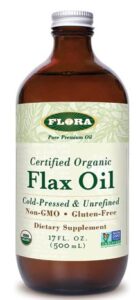
Flax oil details
- Needs to be organic, liquid (not capsules), mechanically, low-heat-pressed (<122ºF), without lignans. Good brands include Flora (nitrogen sealed bottle keeps out air), Spectrum and Barleans.
- Does not contain fiber and only 2% of the seed’s lignans end up in the oil.
- Contains beta-carotene (provitamin A) and vitamin E. Fights oxidation both in the bottle and in the body,
- Contains lecithin and other phospholipids, which help emulsify (break down) fats and oils aiding their digestion
- Oil has a tendency to go rancid on exposure to air (oxidized by oxygen – increased by heat and especially light} very quickly after being pressed from the seeds.
Shelf-life of flax oil
Flax oil begins to oxidize after its container is opened – exposing the oil to oxygen in air. Since heat and especially light will increase the oxidation rate, the oil should be kept refrigerated or frozen in opaque / dark colored containers to slow its deterioration rate. However, according to leading fats expert Dr. Johanna Budwig, freezing the oil does not further prevent aging loss of its energetic electrons,
Tip to Keep Flax Oil as fresh as possibleBuy the 32 ounce flax oil. Most economical purchase. Upon opening, transfer oil to four completely filled 8 oz bottles with tight caps and keep them all in the freezer (cold, in the dark, with no air /oxygen at the top). This will avoid further exposure to oxygen until you open each bottle. |
What about heating flax oil?
Flax oil omega-3 fatty acids are more resilient to heat than you might think.
Provided the flax oil is held at temps under its smoke point temperature of 107 ºC (225 ºF) for less than a few hours. Over 107 C, significant oxidation does occur with higher heating temperatures and time, creating toxic oxidation products with inherent loss of the oil’s essential omega-3 fatty acids. Oxidation also increases with the contact area between the oil and air.
E.g. Keeping oil at 105 ºC (221 F) for 48 hours, loses 2.69% of omega-3 α-linolenic acid, and at 135 ºC (275 ºF) for 16 hours loses 4.23% of ALA.
Effect of Heating on the Fatty Acid Composition and Oxidation Products of Flaxseed Oil
What's in flaxseeds?

1 Tbsp. Flaxseeds (10g / 55 cals )
⊃ Total lipids: 4.216g; omega-3 ALA: 2.28g; omega-6 LA: 0.59g; MUFAs: 0.75g; SFAs: 0.37g;
water: 0.7g; sugar: 0.15g’; fiber: 2.73g ; protein:1.83g; phytoestrogens (SDG): ???
1 Tbsp. Flax OIL (15ml):
⊃ 7g omega-3 ALA; 2g omega-6 LA; 2.5g MUFA Oleic acid
1 Tbsp. Flax MEAL (Ground) (7g / 37 cals.) (Note: the meal loses some of its O3 and O6 to oxidation if not consumed within a short time or kept in an airtight container)
⊃ omega-3 ALA: 1.4g; omega-6 LA: 0.37g; fiber: 1.62g;
protein: 1.26g; Mg: 26mg
Source: USDA
References
Kezimana P, Dmitriev AA, Kudryavtseva AV, Romanova EV, Melnikova NV. Secoisolariciresinol Diglucoside of Flaxseed and Its Metabolites: Biosynthesis and Potential for Nutraceuticals. Front Genet. 2018 Dec 12;9:641. doi: 10.3389/fgene.2018.00641. PMID: 30619466; PMCID: PMC6299007.













